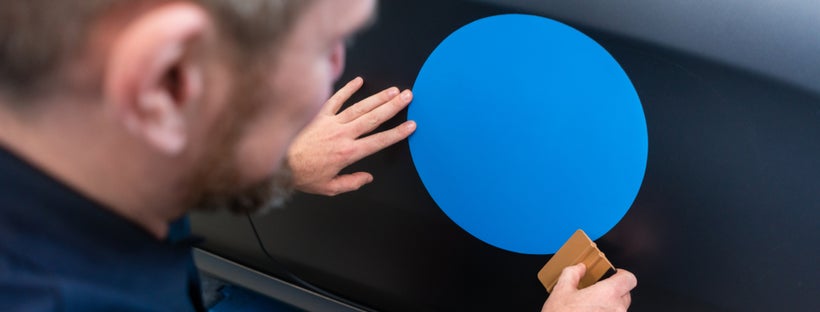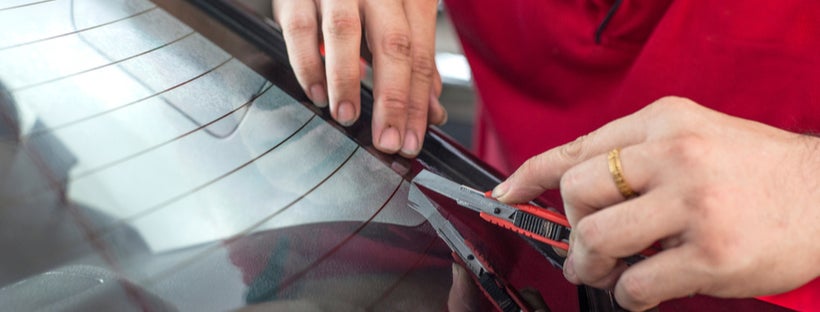Decals and car signs are a creative way to make a statement, which is useful for businesses, election campaigns, sports teams, and bands. This method of advertising offers an opportunity to display contact information, brand images, and other useful information while you are on-the-go. When it comes to removal, however, it can prove to be a difficult task.
Although decals are typically very safe to remove, there is still a risk of leaving adhesive residue behind or causing damage to the car’s paint if excess heat is used. Fortunately, there are heatless methods for removing car decals.
Clean the Surface

Vehicles are constantly exposed to dirt, roadside debris, sunlight and moisture. Over time, a layer of grime builds up on the surface of a vehicle, which can gather around the edges of your car decal. Cleaning the area prior to removing the decla will make the process run smoothly.
Drop a small amount of liquid soap into a bucket full of lukewarm water and allow the soap to dissolve into the mixture. Using a clean rag, thoroughly wipe around the decal to remove the dust particles and grime from the surface. Pour clean, soap-free water on the area to wash away the suds. Now, allow the surface to air dry completely.
Warm Water Method

A very effective and safe way to remove the decal is by applying warm water to the stickers surface, allowing the dried adhesive to loosen. Soak a clean piece of cloth in a bucket of warm water and apply it to the decal. Hold the rag over the decal’s surface for a few minutes, then pull up a corner of the sticker and gently start to peel off the decal. Gently lift the corners and evenly remove from each side, working your way to the center.
If the decal looks as if it may get torn and become hard to peel, reapply the warm rag to the area. Wait for some time and repeat the process. Once the decal is thoroughly removed, wipe the area to remove any leftover residue. Sprinkle some glass cleaner and wait. Wipe with a dry cloth to get a clean surface, and the removal process is complete. This method is great for preventing rips and leftover adhesive residue from sticking to your car’s surface.
Acetone As An Alternative
Acetone is a solvent that can dissolve paint, grease, and varnish stains. It is a handy and cheap chemical that is commonly used for spot removal and can be a convenient tool for safely removing car stickers. It is a safe alternative to heat when it comes to windshields and windows. Soak a paper towel in acetone and wrap it around the decal that you want to remove. Let it sit for half an hour, then gently wipe the substance off with a dry paper towel.
Taking off the car signs or flags from the painted portion of the car is a trickier process. Keep some Q tips, a bucket of soapy water, acetone, and a cloth ready. Dip the Q tips in acetone and soak a corner of the car sign with it until it starts to loosen and come apart. Gently pull at the decal’s edge then immediately wipe off the acetone with the soapy rag. Repeat the process till the car sign or decal comes off entirely. Finally, clean the car’s surface with soapy water then rinse with clean water and allow the surface to air dry. Finally, apply wax polish to leave your vehicle with a sparkling exterior.
How To Use A Razor Blade to remove car decals

Using a razor blade is another heatless option to remove the car signs and decals from the glass windshields and windows. Auto shops or hardware stores will have this item available for purchase. While you need to be careful about using them, they can easily remove the decals from the glass. Simply hold the razor blade under the edge of the car flag at an angle of 30-45 degrees. Work the blade inwards and push along. Take care to keep the blade flush and flat on the glass to avoid vehicle scratches or injury.
Use a disposable, double-edged plastic razor blade to remove the car signs from the painted area of the vehicle. Once the decals have been removed, clean the surface using soap and water and apply a generous coat of wax polish to buff the surface. Now you have a clean, scratch-free area you can leave as is or use to apply future decals.

 Posted in
Posted in 


